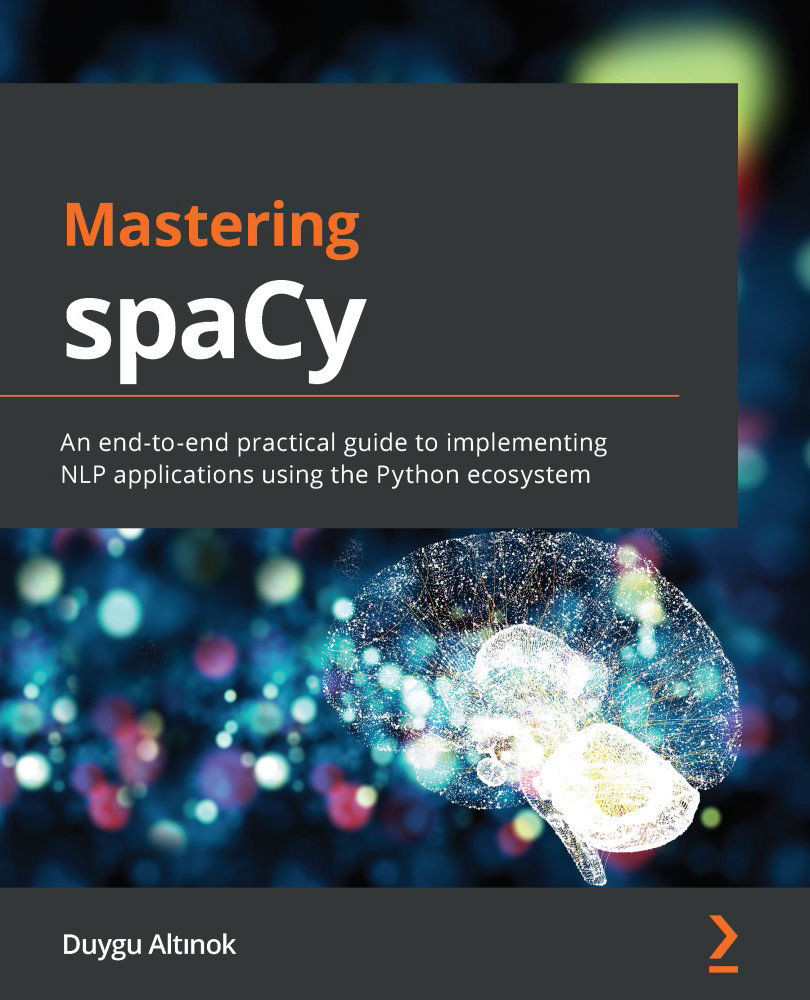-
Book Overview & Buying

-
Table Of Contents

Mastering spaCy
By :

Mastering spaCy
By:
Overview of this book
 Free Chapter
Free Chapter
 Sign In
Start Free Trial
Sign In
Start Free Trial

 Free Chapter
Free Chapter
This is a purely hands-on section. In this chapter, we will apply what we have learned hitherto to Airline Travel Information System (ATIS), a well-known airplane ticket reservation system dataset. First of all, we will get to know our dataset and make the basic statistics. As the first natural language understanding (NLU) task, we will extract the named entities with two different methods, with spaCy Matcher, and by walking on the dependency tree.
The next task is to determine the intent of the user utterance. We will explore intent recognition in different ways, too: by extracting the verbs and their direct objects, by using wordlists, and by walking on the dependency tree to recognize multiple intents. Then you will match your keywords to synonyms from a synonyms list to detect semantic similarity.
Also, you'll do keyword matching with word vector-based semantic similarity methods. Finally, we will combine...
